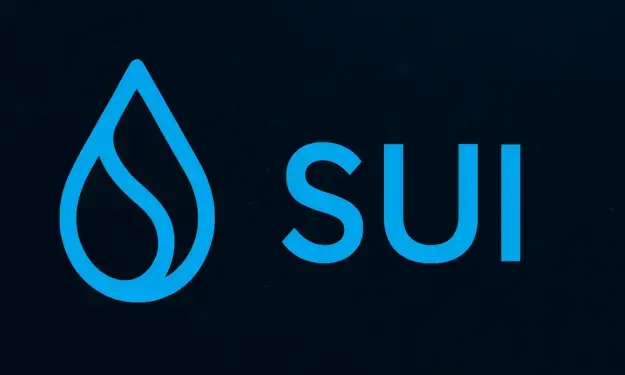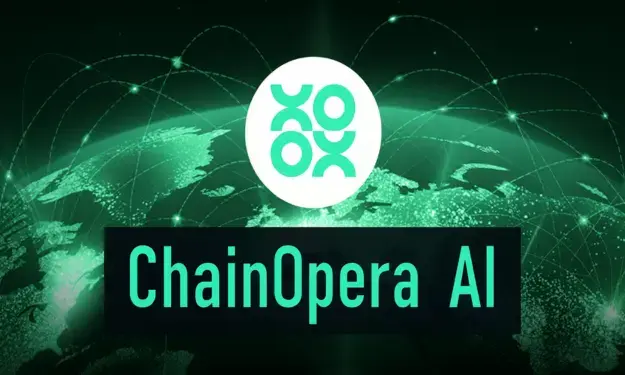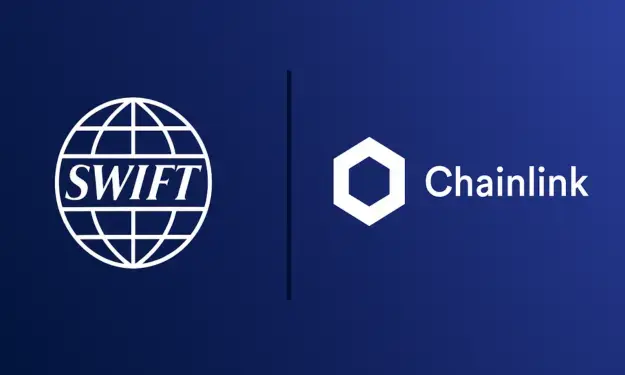Publication date: June 12, 2025
Uniswap (UNI) has been at the core of decentralized finance (DeFi) since 2020. The protocol, known as the pioneer of decentralized exchanges (DEX), has facilitated billions in trading volume since then and continues to evolve. But after five years of innovation and intense competition, the question arises: will Uniswap remain the dominant player, or is that lead crumbling?
A lot has changed since our last article on Uniswap on Oct. 17, 2024, which you can read back here. With the launch of Uniswap V4, legal conflicts with the U.S. SEC, and a renewed focus on cross-chain interoperability, 2025 is so far a year full of movement.
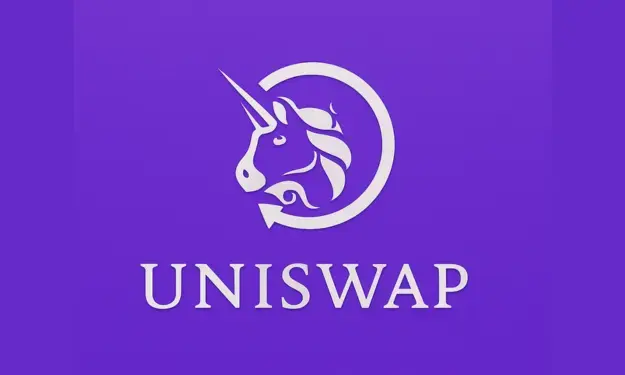
What is Uniswap, and why is it important?
Uniswap is a decentralized exchange built on Ethereum, where users can exchange crypto directly without the intervention of a central party. The engine behind this system is an automated market maker model (AMM model), which Uniswap was the first to implement on a large scale.
The AMM model allows users to add liquidity to trading pairs and earn rewards in return. As a result, Uniswap quickly became an essential part of the DeFi infrastructure. The native token $UNI is used for governance, or in other words, voting rights on key decisions within the protocol.
New developments in 2025
Uniswap continues to rapidly evolve to maintain its leadership position within the world of decentralized commerce. There are three major innovations in 2025 that affect both the technology and the protocol's position in the marketplace. Below is a summary of the most notable developments.
1. Launch of Uniswap V4.
On May 24, 2025, the fourth version of Uniswap was officially launched. Key improvements:
-
Hooks: Developers can now add their own logic to liquidity pools. This makes Uniswap V4 a more flexible and extensible protocol.
-
Gas savings: Using so-called "singleton contracts" reduces gas consumption by an average of 15%.
-
Time-weighted liquidity: Users can spread their liquidity over time, reducing the risks of temporary price shifts.
These innovations are seen as essential to keep Uniswap competitive against emerging DEX protocols such as Curve, Balancer, and even new Layer 2 networks.
2. Legal pressure from the SEC
In April 2025, Uniswap Labs was taken to task by the U.S. SEC for allegedly offering "illegal securities" through the protocol. The case is ongoing, but has led to increased on-chain censorship measures and the blocking of certain tokens through the app's front end.
This highlights the growing tension between DeFi innovation and legislation. Yet the on-chain core of Uniswap, the smart contracts, remains freely accessible and functional, something that reaffirms the power of decentralization.
3. Cross-chain expansion with UniswapX
Following the need for scalability and better user experience, Uniswap has expanded its UniswapX initiative. This is an intention-based trading system where orders are placed off-chain and automatically executed on the best chain. The system uses aggregators to gather liquidity across multiple networks such as Arbitrum, Optimism, and Base. For users, this means lower costs, higher efficiency, and a seamless experience across multiple blockchains.
Price movement of Uniswap
The chart below shows Uniswap's share price movement over the past year. Since our previous article from October 2024, the token has shown a highly volatile pattern. Like many other cryptocurrencies, Uniswap benefited significantly from the U.S. presidential election, with the price nearly tripling within a month to a peak of $19.50. However, this was not the highest ever; the record was reached in May 2021, when the price soared to $45. Since then, Uniswap has not come close to that level.
In recent weeks, there has been renewed optimism around Uniswap. Interestingly, trading volume continues to increase, particularly on Layer 2 networks, indicating growing adoption despite continued regulatory pressure. Last week, the stock price showed a strong increase, mainly due to the successful integration of Uniswap V4. The coming weeks will reveal whether this positive momentum holds up.
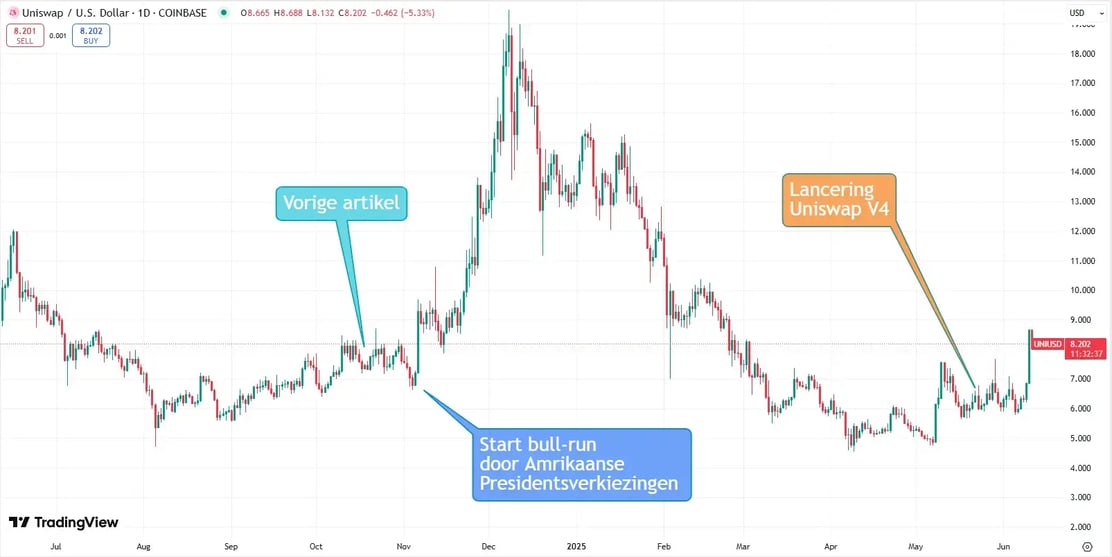
What could drive up Uniswap's share price?
1. Adoption of Uniswap V4: If more developers and protocols start using the new V4 features, this could lead to more activity on the network.
2. Growth of Layer 2 usage: Uniswap is now active on multiple Layer 2 networks. These networks lower transaction costs, which is attractive to smaller users.
3. Governance updates: Proposals are being worked on where UNI holders could receive a larger share of fee revenue, which could increase the value of the token.

.svg)




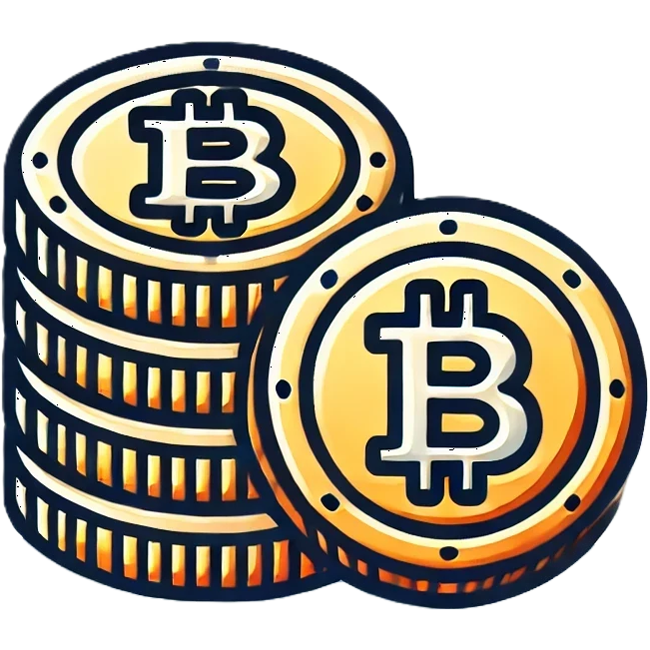

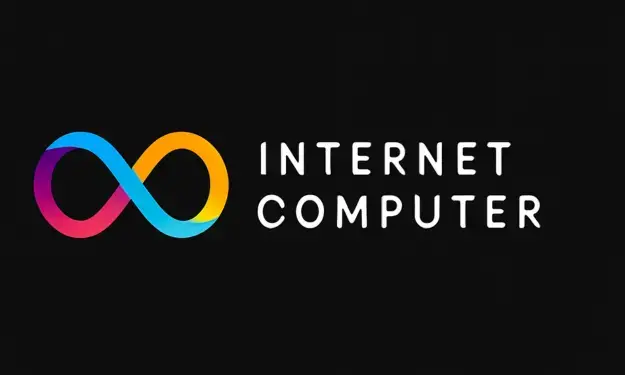
.webp)
